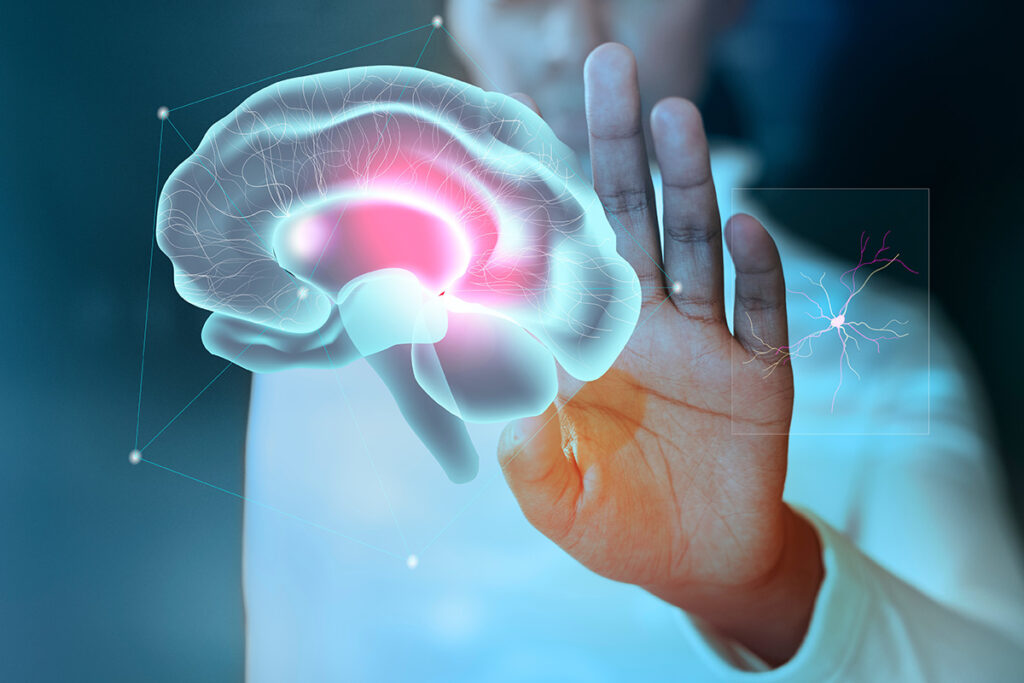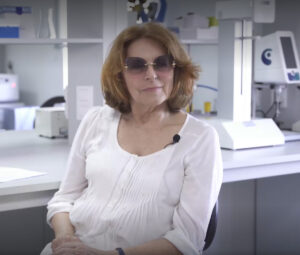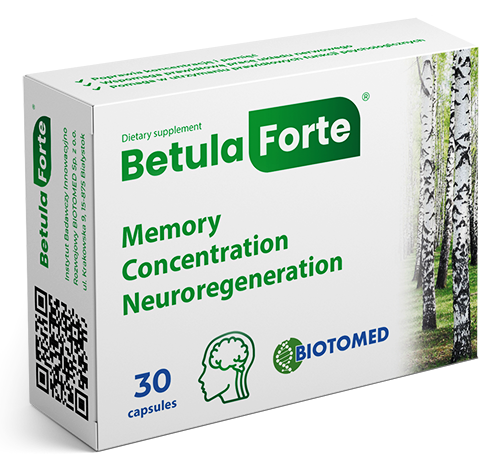Blog
Neurodegenerative diseases
What are they manifested by and who is most vulnerable to them?
Neurodegenerative diseases are a group of congenital or acquired progressive diseases of the nervous system, in which the basic pathological phenomenon is a progressive, irreversible process of destruction of nerve cells.
Depending on the location of the disease process, focal symptoms appear, which can be divided into:
- progressive dementia, dementia that is, loss of intellectual capacity with behavioral and personality disorders,
- related to motor function difficulties in moving, breathing, speaking.

The disease process begins earlier and is asymptomatic for 10 to 30 years. The first signs appear when about 40-50% of nerve cells are damaged.
Neurodegenerative diseases include : Alzheimer’s disease, Parkinson’s disease, Hantington’s chorea, spinal muscular atrophy,frontotemporal dementia and many others.
The causes are not fully understood. Scientists consider toxic factors such as cigarettes, alcohol, drugs, atmospheric pollution, inflammatory diseases, heart disease, stroke, diabetes obesity and many others. Congenital disorders are the result of inherited mutations.
Alzheimer
It is the most common neurodegenerative disorder. It was first described by German neuropathologist Alois Alzheimer in 1906 and is named after him.
The disease accounts for about 60% of all dementias, and the number of cases increases with age. In familial forms it appears, usually before the age of 45, and has a violent, dramatic course. Behavioral disorders, psychomotor agitation, hallucinations appear. The second form, the so-called senile variant of the disease, has a milder course. Initially, episodic memory disorders appear, i.e. the inability to permanently remember new information, then the lack of previous interests, less attention to appearance, mood changes.

A tidy accountant will have trouble with addition and subtraction, a surgeon won’t hold a scalpel, an academic lecturer will forget what he was supposed to give a lecture about. Today they live normal lives, not realizing that a serious disease is developing in their bodies.
The course of this disease is very dramatic. The first symptom is episodic memory disorder. Patients during this period function fairly normally, work, are present in social spaces, but slowly begin to avoid people. Unfortunately, very often these symptoms are underestimated, and neuropsychological tests usually do not reveal abnormalities. In the next stage, the patient is increasingly confused. Mild cognitive impairment appears. The patient loses objects, does not recognize people, loses initiative, daytime rhythm disturbances join in, and is sometimes suspicious. Symptoms increase and there is a barracking of the ability to function independently.
In the last stage of the disease, the patient is no longer aware of his behavior. He may be aggressive (verbal and physical aggression). There are also hallucinations, hallucinations, unfounded accusations of those closest to him. All this is very difficult for caregivers to control and bear. Balance disorders and uncontrollable falls are very common. The patient becomes dependent, lying down.
What’s more, there are complications. It is important to know that Alzheimer’s disease is not fatal. It is the complications that are the cause of death in these patients. A lying patient does not move his limbs, but these are not paresias as in strokes, but a lack of brain stimulation. The patient forgets that he can move his legs.
Studies show that more and more people as young as 65 years old are suffering from Alzheimer’s disease. In Poland, half a million patients have dementia syndrome – of which 60 percent are Alzheimer’s patients.
Parkinson’s disease
It is a fairly common condition. In this case, various treatment techniques are known to be able to help the patient. A patient affected by Parkinson’s disease has motor disturbances, increased tension that makes it difficult to move or speak. On the other hand, there are drugs that help for 5 – 10 years. A new brain stimulation technique has been invented that provides relief and assistance.
The progression of the disease is slow and takes years. Almost all patients develop a tremor, usually starting in one hand. It becomes apparent at rest and significantly decreases when performing movements. There are often manipulations of the fingers resembling a gesture of counting money. Tremor may also involve the lips, cheeks and legs, rarely the trunk and head.

Another of the symptoms is muscle stiffness, easily recognized by the doctor. The patient experiences it as a certain clumsiness of movements and a weakening of their coordination. The third symptom that completes the diagnosis is the so-called bradykinesia. It signifies slow movements, difficulty in starting them and restriction, for example, of balancing the arms while walking. The picture of the early stage of the disease is completed by a poppy face – poorly expressing emotions, infrequent blinking, stooped posture and walking with small steps, lack of balancing of the upper limbs. The onset of the disease may also manifest itself as a vague feeling of weakness, fatigue, lack of coordination of movements, experiencing discomfort and the appearance of pains.
One must fight for the brain
A way to delay the asymptomatic clinical phase of the disease is to build up cognitive reserve, which is defined as knowledge and skills acquired during life. These can delay age-related cognitive decline, postpone, alter or slow the development of the dementing process. More neurons work if we learn foreign languages, cultivate our passions, and educate ourselves throughout life. Poor physical activity shortens the pre-dementia period, as does a tendency to close in on oneself and lack of social contacts.
Even if we don’t have a genetic load or any data indicating neurodegenerative diseases, let’s fight for our brains. The brain should be provoked into activity. Learning a foreign language, playing chess, doing puzzles and setting ourselves new challenges and completing them will work perfectly. In these cases, solving crossword puzzles or reading books is not enough. Regular physical activity is also very important. It is also necessary to take care of oneself and not neglect treatment of comorbidities.

Krystyna Paprocki, MD, PhD, neurologist.

BetulaForte dietary supplement
is intended for people who, want to:
- improve intellectual performance and concentration,
- improve short- and long-term memory,
- get rid of brain fog and improve perception,
- stimulate brain activity.


